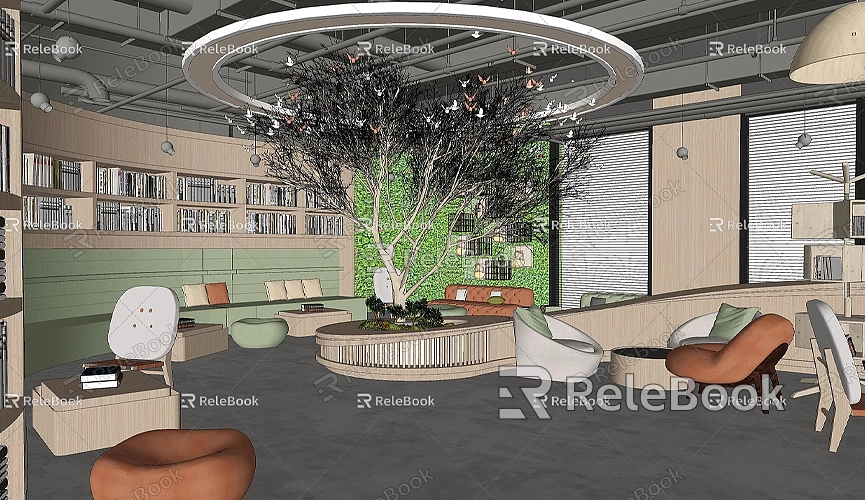How to bring a sketchup model into 3d builder
3D modeling is becoming increasingly popular across various industries, from architectural design to game development and 3D printing, all requiring different specialized software. Among these tools, SketchUp and 3D Builder each have their unique advantages. SketchUp attracts many designers with its user-friendly interface and powerful modeling capabilities, while 3D Builder, developed by Microsoft, is a free tool often used for inspecting and repairing 3D models intended for 3D printing. After creating a model in SketchUp, many users need to import it into 3D Builder for further processing, such as optimizing the model and preparing it for 3D printing. This article will detail how to import a SketchUp model into 3D Builder, as well as potential issues and solutions that may arise during this process.

Why Use SketchUp Models in 3D Builder?
For many designers, SketchUp is a convenient tool for quickly creating 3D models, whether for architectural design, furniture design, or other projects. However, the model format used by SketchUp (.skp) is not directly compatible with some software, particularly when preparing models for 3D printing, which often requires further optimization and adjustments. At this point, importing the model into 3D Builder becomes essential. The advantages of 3D Builder include its built-in features for repairing model errors, scaling and resizing, and easily exporting files in formats suitable for 3D printing (such as .STL and .OBJ).
Exporting SketchUp Models to a Format Supported by 3D Builder
Models exported directly from SketchUp are in .skp format, but 3D Builder does not support opening this format directly. Therefore, we first need to export the model from SketchUp in a format recognized by 3D Builder, such as .STL, .OBJ, or .3MF.
Exporting to STL Format
1. Open your SketchUp model and ensure there are no unnecessary errors or geometry. Confirm that all components are grouped for easier management during import into 3D Builder.
2. Select the "File" menu, click "Export," and then choose "3D Model."
3. In the export options that appear, select the .STL format. If you don’t see this option, you may need to install the STL export plugin for SketchUp, which can be found in the Extension Warehouse.
4. After setting the export path and file name, click "Save." Your SketchUp model will now be successfully exported.
Importing the SketchUp Model into 3D Builder
After completing the export steps, you can now import the exported .STL file into 3D Builder.
1. Open 3D Builder and select "New Scene."
2. Click the "Import" button, then choose the .STL file you just exported from SketchUp.
3. 3D Builder will automatically load the model and preview it. During this process, if there are any geometric errors or damage in the model, 3D Builder will prompt you to make repairs.
4. After import, you can use various tools in 3D Builder to rotate, scale, or reposition the model.
Repairing and Optimizing the Model
After importing the SketchUp model, you may find that some details require further adjustments. Ensuring the model is free of errors and damage is crucial, especially when preparing for 3D printing. Here are some common optimization steps in 3D Builder:

Checking and Repairing the Model
3D Builder has a very useful "Repair" function that can automatically detect and fix small holes and damages in the model. This is extremely helpful for ensuring the model prints correctly. Just click the "Repair" button, and the software will scan the model and provide repair suggestions, which you can choose to accept or adjust further.
Adjusting Model Scale and Dimensions
Sometimes the dimensions of a model exported from SketchUp do not meet the actual needs of a 3D printer, so you may need to reset the dimensions in 3D Builder. 3D Builder supports precise scaling adjustments, allowing you to quickly resize the model to the appropriate size. Additionally, if you need to combine multiple models into one, you can do so directly in 3D Builder.
Adding Support Structures
If you plan to use your SketchUp model for 3D printing, you also need to consider the model's print structure. Complex models may require additional support structures during printing to ensure stability. 3D Builder offers a simple support generation feature that can automatically add support columns where needed, reducing the likelihood of print failures.
Exporting in a 3D Printing Format
After completing all adjustments and optimizations in 3D Builder, you can export the model in a format suitable for 3D printing. Common formats include .STL, .OBJ, and .3MF. Choose the appropriate format based on your printer's requirements. Here are the specific steps:
1. Click the "Save" or "Export" button.
2. Select the desired file format, such as .STL.
3. Confirm the save path and file name, then click "Save."
Now your SketchUp model is ready and can be directly used for 3D printing.
Tips for Improving Model Quality
Throughout the conversion and optimization process, there are some tips that can help enhance the final results of your model.
Simplifying the Model’s Polygon Count
When importing a SketchUp model into 3D Builder, overly complex models can slow down processing. Therefore, it’s advisable to simplify the polygon count in SketchUp, particularly for unnecessary details and complex geometries. You can use the "Simplify" plugin in SketchUp to effectively reduce the polygon count while maintaining the overall visual effect.
Optimizing Materials and Textures
When exporting to .STL format in SketchUp, material and texture information will not be retained. However, if you plan to further process the model in 3D Builder, you can use the .OBJ format to retain material information. Of course, simplifying materials can often help improve the quality of 3D printing.
If you need high-quality 3D textures and HDRI while creating models and virtual scenes, you can download them for free from [https://textures.relebook.com](https://textures.relebook.com). For exquisite 3D models, visit [https://3dmodels.relebook.com](https://3dmodels.relebook.com) where Relebook offers a wealth of quality 3D resources.
Importing a SketchUp model into 3D Builder and making adjustments and optimizations is a key step for achieving successful 3D printing and other advanced design operations. By exporting as .STL or .OBJ format, you can easily convert SketchUp models into files recognized by 3D Builder. In 3D Builder, you can repair, optimize, and adjust the model to ensure that the final results meet your expectations.
The steps presented in this article are suitable not only for beginners but also offer practical optimization tips for those already familiar with SketchUp and 3D Builder. Remember to continuously check and repair your model throughout the process to ensure the quality of the final product. If you need high-quality 3D textures and HDRI while creating models and virtual scenes, you can download them for free from [https://textures.relebook.com](https://textures.relebook.com), and for exquisite 3D models, visit [https://3dmodels.relebook.com](https://3dmodels.relebook.com) where Relebook provides a wide range of high-quality 3D resources. With the help of these resources, you can further enhance the visual effects and expressiveness of your 3D models.

